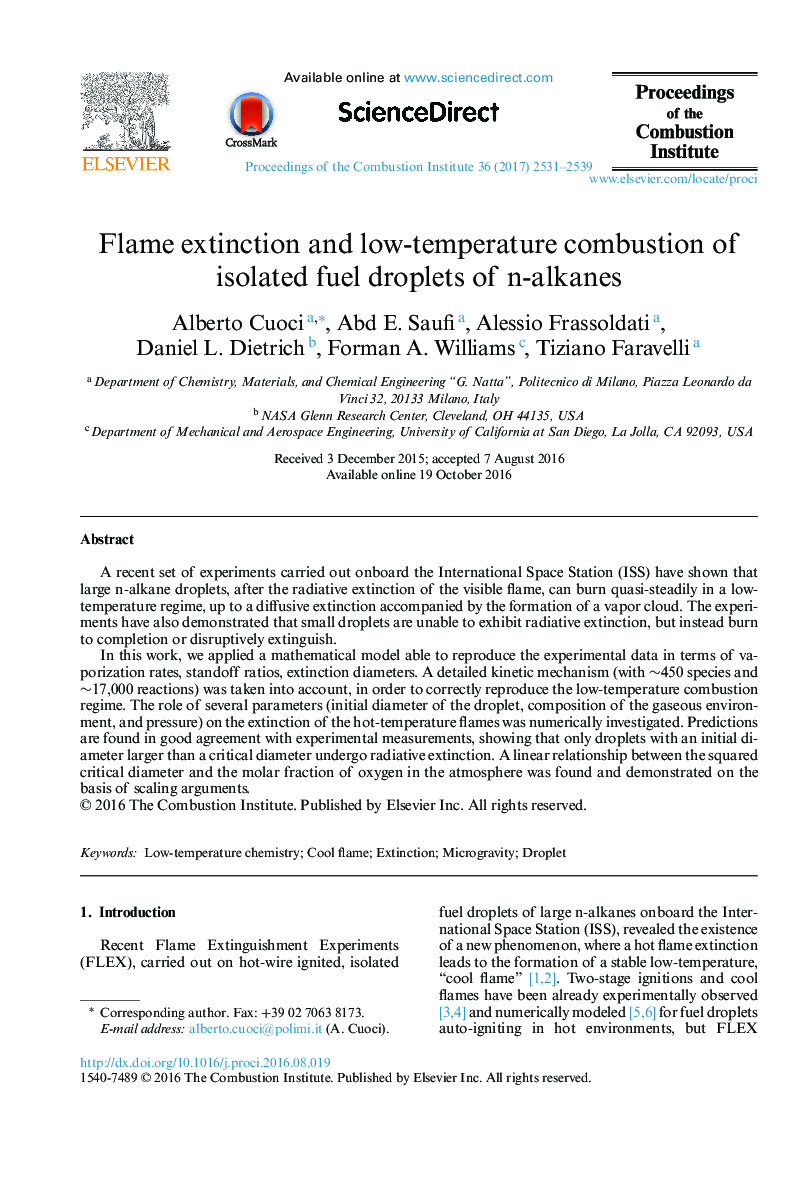| Article ID | Journal | Published Year | Pages | File Type |
|---|---|---|---|---|
| 6478342 | Proceedings of the Combustion Institute | 2017 | 9 Pages |
A recent set of experiments carried out onboard the International Space Station (ISS) have shown that large n-alkane droplets, after the radiative extinction of the visible flame, can burn quasi-steadily in a low-temperature regime, up to a diffusive extinction accompanied by the formation of a vapor cloud. The experiments have also demonstrated that small droplets are unable to exhibit radiative extinction, but instead burn to completion or disruptively extinguish.In this work, we applied a mathematical model able to reproduce the experimental data in terms of vaporization rates, standoff ratios, extinction diameters. A detailed kinetic mechanism (with â¼450 species and â¼17,000 reactions) was taken into account, in order to correctly reproduce the low-temperature combustion regime. The role of several parameters (initial diameter of the droplet, composition of the gaseous environment, and pressure) on the extinction of the hot-temperature flames was numerically investigated. Predictions are found in good agreement with experimental measurements, showing that only droplets with an initial diameter larger than a critical diameter undergo radiative extinction. A linear relationship between the squared critical diameter and the molar fraction of oxygen in the atmosphere was found and demonstrated on the basis of scaling arguments.
